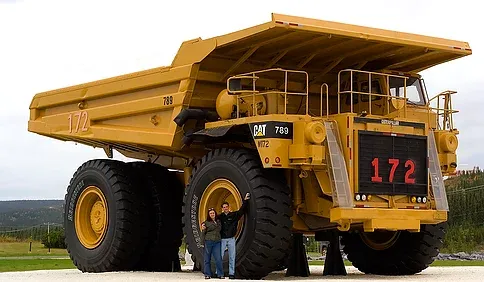
How We Develop Predictive Maintenance Pilot Project
April 24, 2018

Overview of predictive maintenance and AI
Predictive maintenance (referred to as PdM) is a strategy for minimizing equipment downtime and its associated costs. Predictive maintenance solutions are based on predictive analytics software that uses data to provide estimates. When we make a PdM solution, we look at the value of answering questions like these:
-How long will this machine or component last without needing maintenance or replacement?
-How likely is this machine or component to fail within a given timeframe?
-Should we replace the part, or wait another month?
-What is the optimal time to schedule maintenance?
-Which maintenance task should be performed?
What makes a predictive maintenance solution?
The data for making these predictions may come from sensors on the equipment, maintenance logs, measurements taken of the operating environment, information regarding the equipment’s technical specifications, and other sources.
A predictive maintenance solution requires data and an intelligent, integrated system for processing the data. Because PdM aims to provide insight based on the actual “health” of the equipment, machine learning algorithms are a natural choice, as they are dynamic, self-optimizing in accordance with changes in the equipments’ various health factors.
Predictive maintenance vs. Preventative maintenance
Unlike preventative maintenance (also called planned maintenance, planned preventative maintenance, or scheduled maintenance) which avoids failure by using statistical data to create an optimal fixed schedule for maintenance intervals, predictive maintenance software will provide insight based on the equipment’s actual need for service. This means that the maintenance “schedule” will vary, responding dynamically to the actual health of the equipment system.
Predictive maintenance vs. Condition-based maintenance
Those familiar with industrial maintenance systems might ask themselves, “What’s the difference between predictive maintenance and condition-based maintenance?” PdM is similar to condition-based maintenance in that both feed upon data that tracks the equipment’s operating conditions, but PdM goes a step further to calculate and use a probability estimate (of failure, cost, etc) rather than simply triggering an alert when a condition reaches a certain threshold.
The value of predictive maintenance software
All of these maintenance strategies — predictive, preventative, condition-based — are proactive maintenance strategies. These are often employed in tandem and may also include a proactive “design out” component that seeks to remove the maintenance issue by redesigning the piece of equipment so it fails less (or costs less when it does fail, etc). All of these strategies are considered an improvement over reactive maintenance (known as corrective maintenance or “run to fail”), in which operators simply wait for a piece of equipment to fail before fixing it. The value of a good PdM solution is demonstrated in its ability to minimize equipment downtime, cutting maintenance costs and maximizing efficiency.
1. Preparing: Predictive Maintenance Checklist
What information do you need to gather?
-Failure history: the failure or performance history of the machine or component
-Repair history: repair and maintenance history of the machine. This might come from maintenance records and logs with details on which components have been replaced, what maintenance activities performed, etc.
-Machine condition: the operation conditions of a machine. This is data collected from sensors that might record attributes such as temperature, speed, voltage, etc.
-Machine features: the features of the machine or component, such as production date, model, etc. This often comes from technical specifications.
-Operating conditions: environmental conditions that may influence a machine’s performance, such as the location, environmental temperature, volume or temperature of water used, humidity, etc.
-Operator attributes: the characteristics of the operator who uses the machine. For example, is the machine operator a heavy breaker?
How long will you need to gather information for?
It depends on how often failures occur (failure could be an outage, unplanned downtime, breakdown, etc). To create the most accurate predictive maintenance model, the more failures the better, as this provides a large set of instances for the algorithm to base future predictions.
How often does the machine fail? While this information might be tracked in some type of Computerized Maintenance Management System (CMMS), it might not be. Instead, we might find failure records in the on-site maintenance records that track when parts have been replaced. If data on failures isn’t available, we can look at records of conditions that correspond with failure.
2. Predictive Maintenance Pilot Project
What does a pilot project look like?
Across industries, companies are adding machine learning applications to increase revenue, avoid losses, and remain competitive. A pilot study will help us evaluate the feasibility, timing, and cost of a new solution while fine-tuning our algorithms to reach the project’s goals.
You and your team are experts in your domain. While predictive software will provide valuable insights, your team provides industry expertise that is essential to defining the problem, calculating its impact, and evaluating the feasibility and value of potential solutions.
Step 1: Define the problem
Focus on major problems that are keeping you at night. The best pilot project will move the needle on a high-impact problem that aligns with corporate goals. What are your key pieces of equipment whose failure or repair is high-impact or high-cost? Where are failures are most frequent? Keep in mind that even a small malfunction is high-impact when repeated frequently across an entire fleet. Ideally, you’ll choose a small problem that, when solved, contributes towards a relevant, overarching business goal. If there are several possibilities, select the problem that is most well-defined, with the most data readily available.
Step 2: Prepare your team
Get support from key stakeholders. Make sure everyone understands the purpose of the project and the type or sources of data you’ll require. You will learn a tremendous amount from this pilot project, and this learning is more valuable when you have buy-in and context for your pilot. Whether it satisfies your success criteria or not, you will gain valuable insight from a pilot project. For example, new patterns that emerge from the data can highlight areas that you could incorporated into your future innovation strategies.
Step 3: Explore your results
Let’s assume that you discover some interesting patterns or potential requirements during your pilot. Do these results indicate that you (and decision-makers on your team) have been making assumptions that aren’t in line with the most accurate or efficient practices? When you minimize subjective biases by applying machine learning algorithms to a business problem, you may realize that you understand your problem in a very different way. As you continue to add data, the results will become more defined. These answers will then feed into your business planning, enabling your company to move more quickly with new approaches informed by data, not by personally held assumptions.
Step 4: Expand your solution
The benefit of the pilot project is that you begin to understand how to use machine learning and predictive analytics to make better business decisions. If your pilot was the first of a succession of projects, you will be well on your way to extracting insight from your raw data. Now, you can expand to incorporate more types of data and bring more business leaders into the process.
How much will the pilot cost?
Pricing is determined on a case-by-case basis based on these criteria:
-What is the goal of the pilot?
-Is the data readily available? How difficult is it for our engineers to clean and process the data?
-How complex is the problem?
-How long will it take to optimize the model?
-What is the business value of solving this problem?
What types of things does Tribal Interactive do?
A pilot project is collaborative in nature. Your team has essential industry expertise — you are the expert on your problem. On the other hand, we are experts in machine learning solutions — we guide the pilot project, develop a predictive algorithm, and evaluate its requirements, feasibility, accuracy, and cost.
1.We identify a specific question you would like answered.
2.We gather a sample of all data sources available.
3.We get design specs for the equipment or components.
4.We meet with technical personnel to understand the data and hear their insight on which variables we should factor into the solution.
5.We review the data.
6.We put together a plan and budget for a pilot project
7.Once terms have been agreed to, we gather the complete data sources and begin cleaning and processing the data.
8.Our team members research the latest models and start designing experiments to run.
9.Once we get a model working on the data sample, we demo it on new data to confirm that the model is achieving the results to the standards set at the beginning of the project.
10.We meet with your team to communicate the results of the pilot and discuss operationalizing the solution.
What does the client do?
Throughout the pilot, your team will need to provide access to data sources and help us understand the context behind your data. Someone from your team may need to label the data, help us identify when failures have occurred, or help us better understand the mechanical aspects of a certain machine. We might also need your experts to provide feedback on indicator thresholds or advise on ideal working conditions.
For a pilot project, you’ll need to agree to focus on a very specific problem with clear success parameters. “Will this component fail within 10 days?” is an example of a clear question in which is it easy to see whether or not an algorithm produces accurate answers.
How does Tribal keep information secure?
We have years of experience securing data. Specifically, we work with telcos, health care record systems, top security firms, and gaming sites. Additionally, we created the first encrypted messaging app that uses 2048 bit encryption. We prioritize security and will work with your team to ensure that we understand and follow your security requirements.
3. Results
What is the overall cost?
Every pilot project is different and, as a pilot, somewhat experimental in nature. However, no matter what we develop, we focus solutions that we’re sure will produce a ROI within 6 months.
Over time, the machine learning models that form a part of the solution will need to be updated periodically. These updates reflect changes in equipment used, new sets of operating conditions, innovations in machinery (etc) and also the latest research in AI predictive maintenance.
How long does it take?
It usually takes 3–6 months depending on the data, complexity of the problem, and your timeline.
What benefits can we expect?
We help you select high-impact problems that can move the needle.
Examples from companies who have implemented predictive maintenance solutions show a range of positive results:
-A coal mine in Australia wanted better visibility on upcoming causes of downtime in their 4100XPC DC and 4100XPC AC P&H shovels. They would use this insight to predict and control failure events, minimizing their impact against budget, improving margins and maximizing shovel operation. Partnering with Komatsu, they conducted a 6-month trial using a predictive model fed with data from motors, transmissions, gears, bearings, lubrication, and air supply. Results: during the 6 months, no major equipment failed, and shovel availability hit their target of 92% availability for 2 consecutive months.
-Based on findings from the US Department of Energy, predictive maintenance programs have been shown to have a 10x ROI, a 25% reduction in maintenance costs, a 70% reduction in breakdown and a 20% to 25% increase in production. The DoE also estimates that a predictive maintenance program can provide a savings of 8 to 12% more than a preventative maintenance program.
Our Recent Posts
April 24, 2018
March 2, 2018
February 28, 2018
Archive

